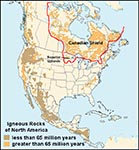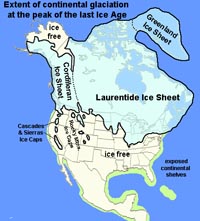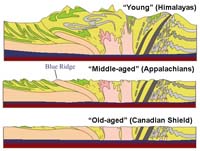Although the bedrock in the Canadian Shield is extremely old—having formed roughly more than 2 to 3 billion years ago in mountain ranges and small landmasses crushed together by plate-tectonic forces. However, those ancient mountain ranges eroded away long ago, and the crust in the region has grown thinner, and sits isostatically lower that other younger, thicker crust in the surrounding province regions (Figure 12). However, because of the geologically recent glaciations, the Canadian Shield displaces a relatively chaotic surface appearance, having numerous lakes and "deranged" river drainage patterns on the recently glaciated landscape.
Superior Uplands Province
The Superior Uplands Province is part of the Canadian Shield that extends into the United States around the western end of Lake Superior (Figure 12), encompassing part of Minnesota, upper Michigan and Wisconsin. Ancient igneous and metamorphic rocks are exposed in what are called the Iron Ranges where belts of Precambrian-age banded-iron formation deposits are exposed and have been extensively mined to provide iron ore shipped to steel mills throughout the easter Great Lakes region. The timbered and rocky shorelines in the Superior Lowlands Province are host to the Apostle Islands National Lakeshore and Voyageurs National Park. |
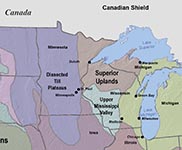
Fig. 13 Map showing the Superior Uplands Province with Upper Mississippi River Valley region (part of the Central Lowlands Province).
|
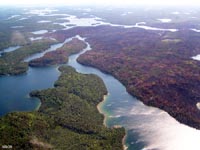
Fig. 13a. This aerial view of Voyageurs National Park shows typical landscape character of the Superior Lowlands Province.
|



